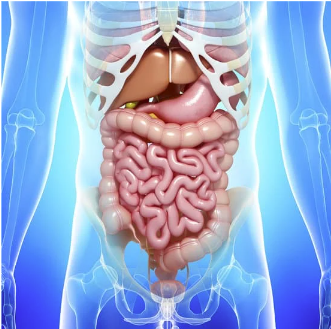Casting a Wide NET: When Is the Optimal Time for 177Lu-Dotatate Treatment?
Given that well-differentiated grade 3 NETs are relatively new, standard-of-care treatment options are undefined.
Given that well-differentiated grade 3 NETs are relatively new, standard-of-care treatment options are undefined.

The incidence of neuroendocrine tumors (NETs) in the US is rising, with 8.3 cases per 100,000 individuals diagnosed in 2018 compared with 6.98 cases per 100,000 individuals diagnosed in 2012.1,2 Most patients with NETs are diagnosed with metastatic disease, at which point curative surgery is no longer a treatment option.3 Prior to 2017, available treatments for advanced NETs included somatostatin analogues (lanreotide [Somatuline] and octreotide [Sandostatin]), targeted therapy (everolimus [Afinitor] and sunitinib [Sutent]), and chemotherapy.4-7 In 2017, the World Health Organization added a classification for well-differentiated grade 3 NETs (Ki67 > 20% and ≤ 55%).8 Previously these tumors were placed under the umbrella of poorly differentiated neuroendocrine carcinomas. Given that well-differentiated grade 3 NETs are relatively new, standard-of-care treatment options are undefined.
NETTER-1 Trial
The international, randomized phase 3 NETTER-1 trial (NCT01578239) evaluated a novel radioligand therapy in patients with inoperable, locally advanced or metastatic, grade 1/2 midgut NETs who had progressed on octreotide long-acting repeatable (LAR). Patients were randomly assigned to either lutetium 177 dotatate (177Lu-dotatate; Lutathera) with standard-dose octreotide (n = 111) or high-dose octreotide alone (n = 110).9 177Lu-dotatate significantly prolonged progression-free survival (PFS) vs high-dose octreotide, with an HR of 0.18 (95% CI, 0.11-0.29; P <.0001). The median overall survival (OS) was 48.0 months in the 177Lu-dotatate group and 36.3 months in the control group (HR, 0.84; 95% CI, 0.60-1.17; 2-sided P = .30).
Importantly, 2 (2%) of 111 patients given 177Lu-dotatate developed myelodysplastic syndrome (MDS), 1 of whom died 33 months after randomization (the only reported 177Lu-dotatate–related death). Data from NETTER-1 and the single-center retrospective ERASMUS trial, a single-center retrospective study of 177Lu-dotatate in patients with gastroenteropancreatic NETS, led to the FDA approval of 177Lu-dotatate in patients with somatostatin receptor–positive grade 1 and 2 gastroenteropancreatic NETs.10,11
NETTER-2 Trial
NETTER-2 (NCT03972488) is a phase 3 international, randomized study of patients with locally advanced or metastatic, well-differentiated, somatostatin receptor–positive, high grade 2 (Ki67 ≥ 10% and ≤ 20%) or grade 3 (Ki67 > 20% and ≤ 55%) gastroenteropancreatic NETs.12 Patients were randomly assigned to either 4 cycles of 177Lu-dotatate plus intramuscular octreotide 30 mg LAR then octreotide 30 mg LAR every 4 weeks (177Lu-dotatate, n = 151) or high-dose octreotide 60 mg LAR every 4 weeks (control, n = 75). The primary end point was PFS; secondary end points included objective response rate (ORR), disease control rate (DCR), quality of life (QOL), OS, and safety.
The median PFS was 22.8 months (95% CI, 19.4-not estimated) in the 177Lu-dotatate group and 8.5 months (95% CI, 7.7-13.8) in the control group. Response rates were higher in the 177Lu-dotatate group (ORR, 43.0%; DCR, 90.7%) compared with the control group (ORR, 9.3%; DCR, 66.7%). There was no significant difference in QOL measurements between groups. OS data are immature; median OS had not yet been reached for either arm.
The most common any-grade adverse effects were nausea (27% vs 18%), diarrhea (26% vs 34%), and abdominal pain (18% vs 27%) in the 177Lu-dotatate and control groups, respectively. Grade 3 or higher hematologic toxicities were reported in 20 patients (14%) in the 177Lu-dotatate arm and 1 patient (1%) in the control arm. One patient in the 177Lu-dotatate arm developed MDS. There were no study drug-related deaths during the treatment period.
QOL Considerations in NETTER-2
Though the PFS data from NETTER-2 are promising, there are several reasons to proceed with caution in applying these results to all patients with high grade 2 and grade 3 NETs in the frontline setting. Patients with NETs have previously emphasized the importance of maintaining QOL during and after treatment. A cross-sectional survey study asked patients with advanced NETs starting a new line of systemic therapy about treatment goals and preferences.13 A majority of patients (70%) indicated that their primary goal of treatment was not survival, selecting maintenance of QOL and reduction in pain/symptoms as more important. Additionally, patients stated that they valued the quantity as well as the quality of their life in both the present (ie, during treatment) and the future (both short term [1 year from now] and long term [5 years from now]). Given that there was no difference in QOL between the 177Lu-dotatate and control arms in NETTER-2, it is difficult to recommend 177Lu-dotatate as a first-line therapy for all-comers.
In addition to the lack of improvement in QOL, the hematologic toxicities and risk of MDS are important. When extrapolated to a broader population, the 2% of patients in NETTER-1 who developed MDS could correlate to roughly 188 individuals (2% of US patients with advanced midgut grade 3 NETs) who could potentially develop this serious adverse effect.14-16
Regarding Efficacy and Looking Ahead
Despite significant improvements in PFS among patients treated with 177Lu-Dotatate from both NETTER trials, this has not resulted in any significant improvements in OS, suggesting that subsequent lines of therapy are potentially impactful. In patients with well-differentiated grade 3 NETs, a median OS of 33.8 months has been reported, implying that this patient population may have the opportunity to receive multiple lines of therapy.17 Therefore, the true impact of 177Lu-dotatate in the frontline setting compared with later linesof therapy requires additional investigation.
Without a clear OS advantage and no improvement in QOL, we would be hesitant to unnecessarily expose patients to the risk of MDS or acute leukemias in the first-line setting.
Looking forward, it will be pertinent to see long-term data for OS, QOL, and safety in NETTER-2 before 177Lu-dotatate can be fully considered for use in the first-line setting for patients with high grade 2 and grade 3 NETs.
NETTER-2 provides intriguing results in the management of patients with high grade 2 and grade 3 NETs. However, many major questions remain in terms of ideal patient selection for use in the first-line setting. Given the absence of OS and QOL advantage, in addition to the risk of MDS and acute leukemias, studies evaluating ideal sequencing of therapies to better characterize the optimal timing for 177Lu-Dotatate treatment are needed.
References
- Surveillance, Epidemiology, and End Results (SEER) Program SEER*Stat Database. National Cancer Institute. Accessed August 23, 2024. https://shorturl.at/J9VJK
- Dasari A, Shen C, Halperin D, et al. Trends in the incidence, prevalence, and survival outcomes in patients with neuroendocrine tumors in the United States. JAMA Oncol. 2017;3(10):1335-1342. doi:10.1001/jamaoncol.2017.0589
- Yao JC, Hassan M, Phan A, et al. One hundred years after “carcinoid”: epidemiology of and prognostic factors for neuroendocrine tumors in 35,825 cases in the United States. J Clin Oncol. 2008;26(18):3063-3072. doi:10.1200/JCO.2007.15.4377
- Caplin ME, Pavel M, Ćwikła JB, et al; CLARINET Investigators. Lanreotide in metastatic enteropancreatic neuroendocrine tumors. N Engl J Med. 2014;371(3):224-233. doi:10.1056/NEJMoa1316158
- Rinke A, Müller HH, Schade-Brittinger C, et al; PROMID Study Group. Placebo-controlled, double-blind, prospective, randomized study on the effect of octreotide LAR in the control of tumor growth in patients with metastatic neuroendocrine midgut tumors: a report from the PROMID Study Group. J Clin Oncol. 2009;27(28):4656-4663. doi:10.1200/JCO.2009.22.8510
- Yao JC, Fazio N, Singh S, et al; RADIANT-4 Study Group. Everolimus for the treatment of advanced, non-functional neuroendocrine tumours of the lung or gastrointestinal tract (RADIANT-4): a randomised, placebo-controlled, phase 3 study. Lancet. 2016;387(10022):968-977. doi:10.1016/S0140-6736(15)00817-X
- Raymond E, Dahan L, Raoul JL, et al. Sunitinib malate for the treatment of pancreatic neuroendocrine tumors. N Engl J Med. 2011;364(6):501-513. doi:10.1056/NEJMoa1003825
- Choe J, Kim KW, Kim HJ, et al. What is new in the 2017 World Health Organization classification and 8th American Joint Committee on Cancer staging system for pancreatic neuroendocrine neoplasms? Korean J Radiol. 2019;20(1):5-17. doi:10.3348/kjr.2018.0040
- Strosberg J, El-Haddad G, Wolin E, et al; NETTER-1 Trial Investigators. Phase 3 trial of 177Lu-Dotatate for midgut neuroendocrine tumors. N Engl J Med. 2017;376(2):125-135. doi:10.1056/NEJMoa1607427
- FDA approves lutetium Lu 177 dotatate for treatment of GEP-NETS. News release. FDA. January 26, 2018. Accessed September 17, 2024. https://shorturl.at/uhiOx
- Brabander T, van der Zwan WA, Teunissen JJM, et al. Long-term efficacy, survival, and safety of [177Lu-DOTA0,Tyr3]octreotate in patients with gastroenteropancreatic and bronchial neuroendocrine tumors. Clin Cancer Res. 2017;23(16):4617-4624. doi:10.1158/1078-0432.CCR-16-2743
- Singh S, Halperin D, Myrehaug S, et al; NETTER-2 Trial Investigators. [177Lu]Lu-DOTA-TATE plus long-acting octreotide versus high-dose long-acting octreotide for the treatment of newly diagnosed, advanced grade 2-3, well-differentiated, gastroenteropancreatic neuroendocrine tumours (NETTER-2): an open-label, randomised, phase 3 study. Lancet. 2024;403(10446):2807-2817. doi:10.1016/S0140-6736(24)00701-3
- Li D, Sun CL, Kim H, et al. Patient-defined goals and preferences among adults with advanced neuroendocrine tumors. J Natl Compr Canc Netw. 2024;20(12):1330-1337.e3. doi:10.6004/jnccn.2022.7059
- U.S. and World Population Clock. United States Census Bureau. Accessed August 23, 2024. https://shorturl.at/t7TYX
- Oberg K, Castellano D. Current knowledge on diagnosis and staging of neuroendocrine tumors. Cancer Metastasis Rev. 2011;30(supp 1):3-7. doi:10.1007/s10555-011-9292-1
- Coriat R, Walter T, Terris B, Couvelard A, Ruszniewski P. Gastroenteropancreatic well-differentiated grade 3 neuroendocrine tumors: review and position statement. Oncologist. 2016;21(10):1191-1199. doi:10.1634/theoncologist.2015-0476
- Boutin M, Mathews A, Badesha J, et al. Well-differentiated grade 3 neuroendocrine tumors: characteristics, treatments, and outcomes from a population-based study. Pancreas. 2022;51(7):756-762. doi:10.1097/MPA.0000000000002100

Newsletter
Stay up to date on recent advances in the multidisciplinary approach to cancer.
Artificial Intelligence in Cancer Care: Addressing Challenges and Health Equity
Artificial intelligence may mitigate overdiagnosis and unnecessary treatments in cancer cancer care by integrating with precision medicine.